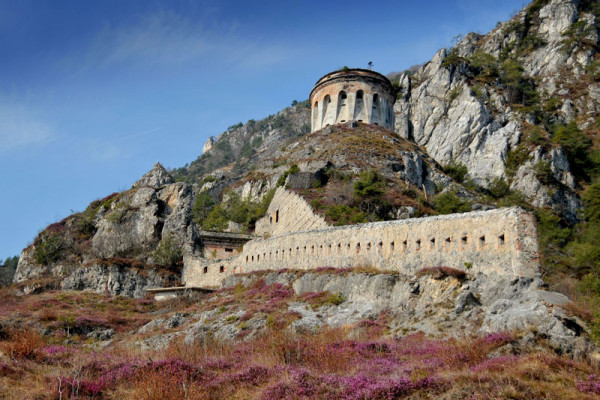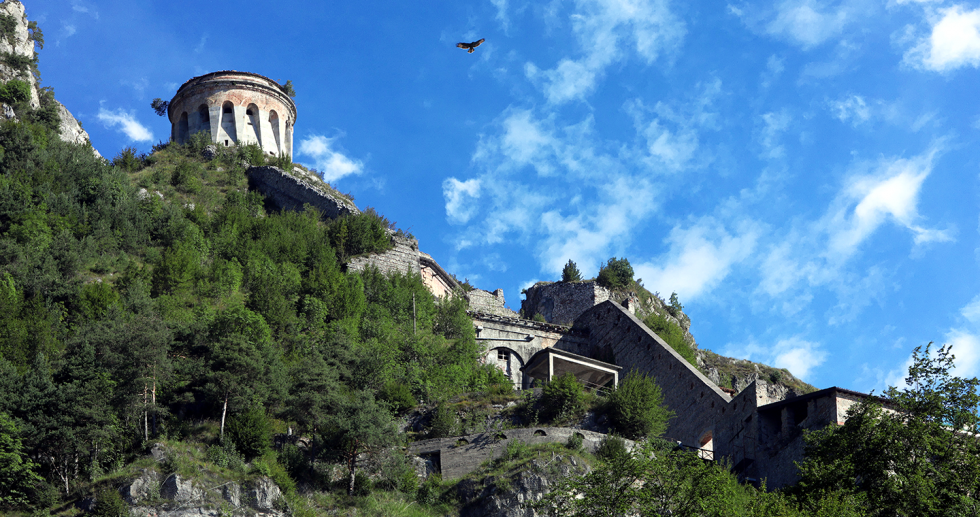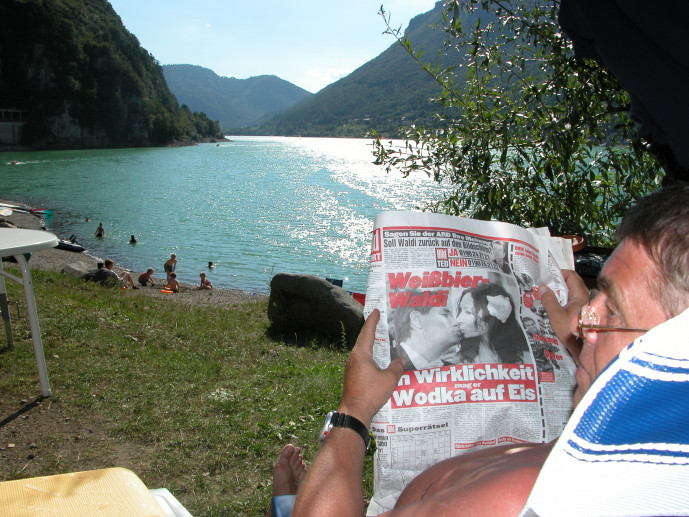- Art & Culture
- Villages
- Active & Green
- Tourism Accessible
Rocca d’Anfo
Rocca d'Anfo is a system of military fortifications of great historical and scenic interest which occupies an area of about 50 hectares on the western shore of Lago Idro (BS), close to the border between Lombardy and Tyrol between Valle Sabbia and the Valle delle Giudicarie.
The military complex, built in the fifteenth century by the Venetian Republic, and greatly expanded in the Napoleonic era, represents a unique element of regional and national character size and historical importance.
Origins
The construction of the Rocca d'Anfo fortress begun in 1450 by the Venetian Republic, who ruled the Brescia area of Valle Sabbia from 1426 to 1797. The design and oversee of the construction plan was entrusted to Count Gian Francesco Martinengo, " brave leader and a talented military engineer” . The original plans of the Visconti of Milan (former rulers of the land) were changed. The long construction work finished in 1490, and some researchers believe the new defensive complex was built on a previous Longobard fortress.
In the Venetian period, all requirements of the Rocca, as well as for all the other fortifications, were supervised by the Board of Elders then since 1542 the Serenissima gave the charge the title of the Superintendents of the fortresses to two senators. The military command structure was entrusted to a roman patrician with the title of administrator, under whom there was a captain, thirty soldiers and some (bombers) gunners. The military garrison was subject to the militia captain of Brescia and, for the logistics to the Podestà of Venezia.
From the Visconti’s original buildings there are still visible only the double upper walls, (because with) as in the (advent of the) Napoleonic era, the changing techniques of war imposed a complete change of the entire fortified structure.
The Rocca consists of a fortified trench towards the (town) village of Anfo, defended by a carabinieri station (military section of Italian Army) known as Rocca Vecchia, on the upper side the Batteria Veneziana; both dominated by a guard house, located 200 meters above the lake and connected to the batteria from a wall with arrow slits and steppingstones. Against the "enemy" Trentino they developed a system of battery and stations, each overlapping the other. On the north side there was a precipitous abyss.
These defense battery systems were called:
• Batteria Tirolo, 100 meters above the lake;
• Batteria Rolando, 150 meters above the lake;
• Batteria Belvedere Superiore at 250 meters above the lake.
• 50 meters, under the Lunetta, there was the Batteria Bonaparte, later renamed Anfo, in defense of the road between the Rocca Vecchia and the Batteria Tirolo
• on the whole building, at a height of 300 meters, it hung a tower with two floors.
Please note the word Batteria is the italian name for Battery
Trenches, pads, ramps, covered roads, powder magazines, stables for mules, accommodation for the troops and water tanks completed the military logistics of the fortress.
The military constructions are distributed in a triangular shape, of which one side corresponds to approximately one kilometer of the shore of Lake Idro. The rest is spread on the eastern side of Mount Censo, almost to its summit, with an altitude ranging from 371 meters above sea level from the shore of the lake to 1,050 meters from the (summit) top.
Opening hours
May - November
Other links
FacebookInformazioni per turisti con disabilità


























